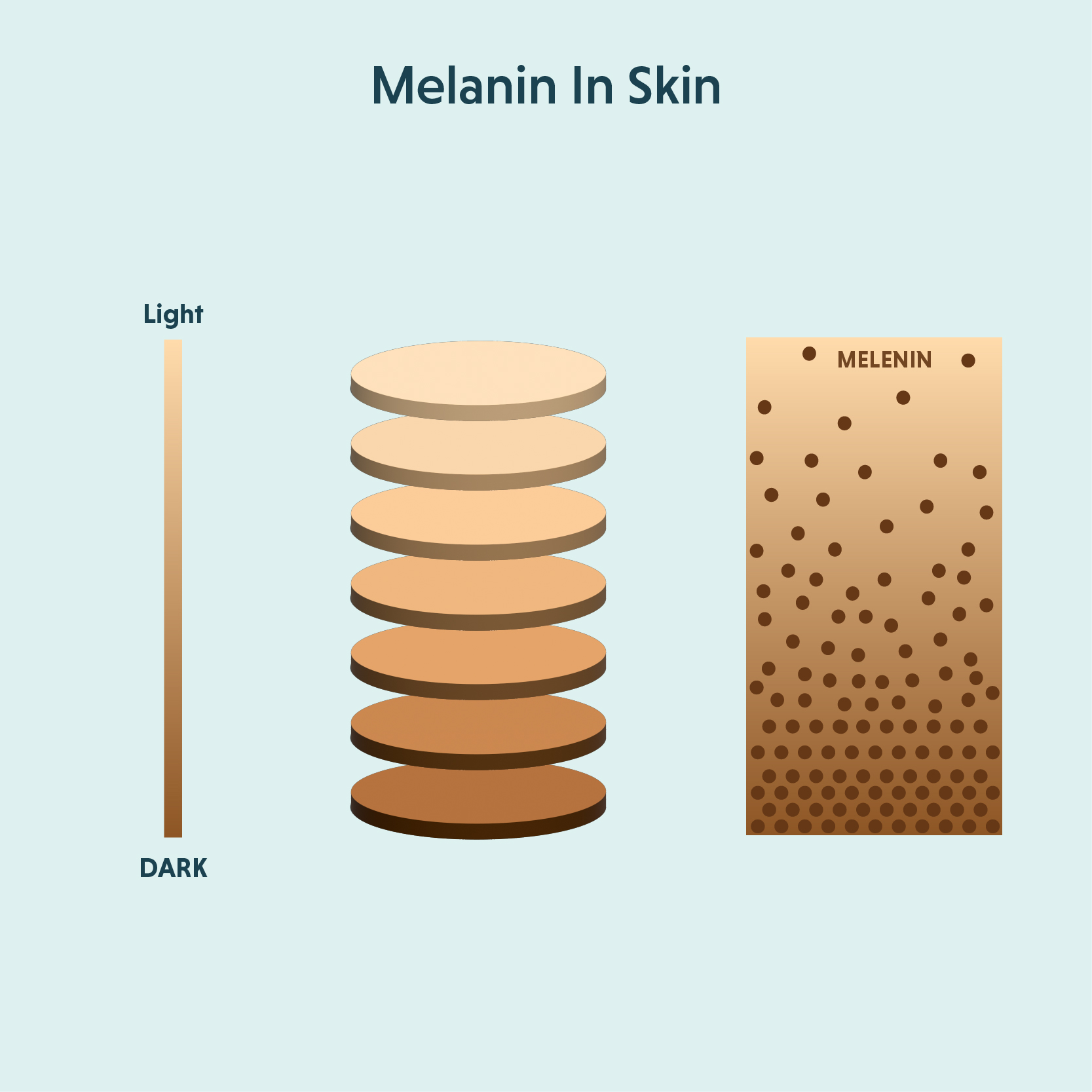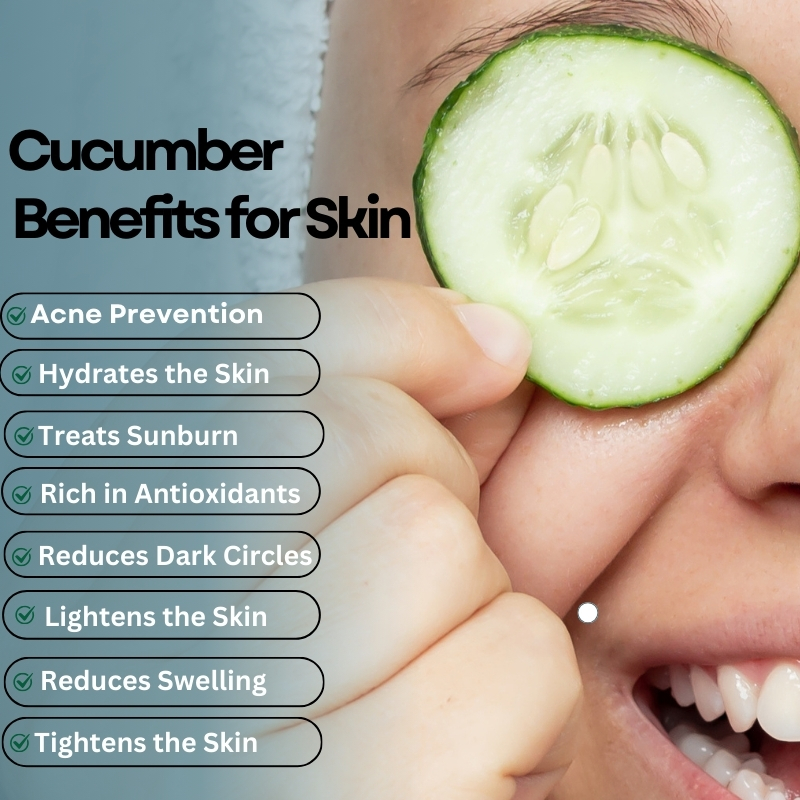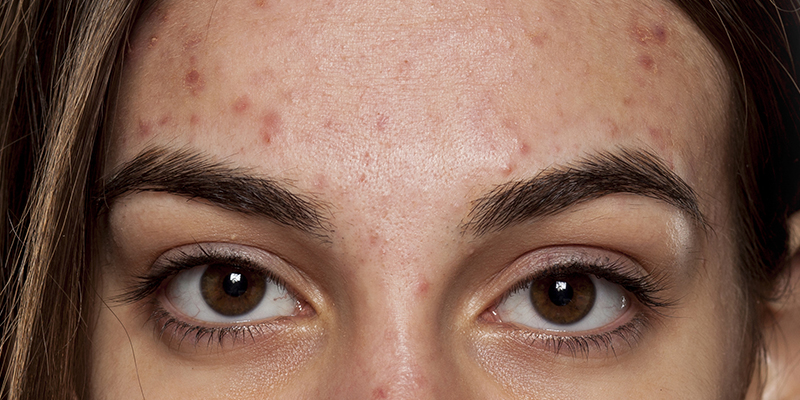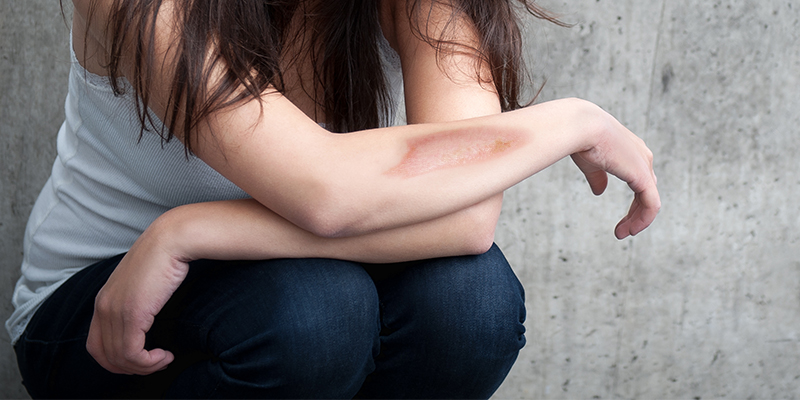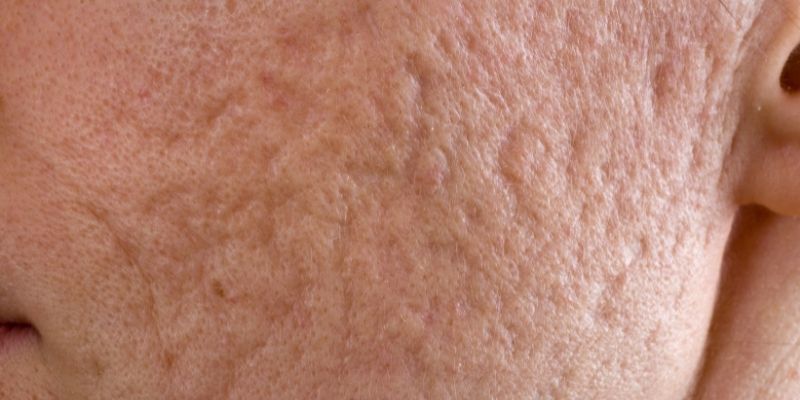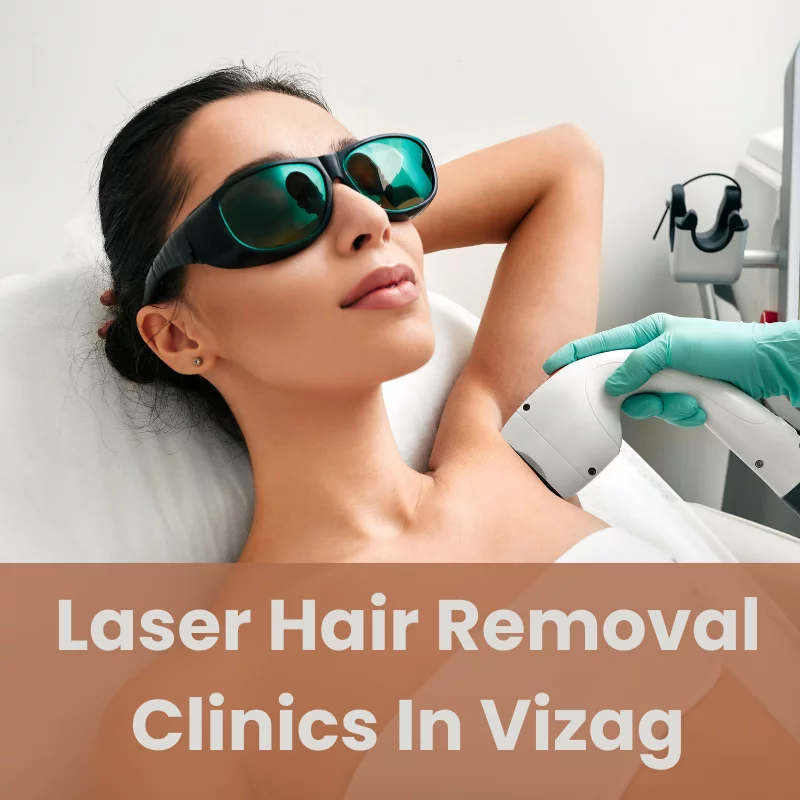Melanin: Understanding Its Types, Benefits, and Impact on Skin Health
Melanin is a natural pigment in the body, responsible for the colouration of your hair, eyes, and skin. Higher melanin levels result in darker hair, eyes, and skin tones. Your genetics and the historical sun exposure of your ancestral population influence the melanin your body produces.
This article helps us understand melanin’s meaning, what is melanin, how to decrease melanin in the body and how to increase it. It also discusses the types of melanin, its benefits and effects on hair and skin.
What Is Melanin?
Melanin is a complex polymer. It is derived from the amino acid tyrosine. Human and animal bodies have different levels of melanin.
The distinct colour of your eyes, hair and skin comes from melanin.
If you have high levels of melanin, you are likely to have darker hair and skin, and yes, you are more likely to have darker skin compared to someone with lower levels of melanin.
What Does Melanin Do In The Body?
The basic role of melanin is to provide pigmentation. Your eyes, hair, and skin get their colour from melanin and whether they will be dark or light depends upon how much melanin is present in your body.
Melanin also helps absorb the sun’s harmful UV rays, protecting cells from sun damage.
What Are The Different Types Of Melanin?
There are three different types of melanin found in the human body. These are:
-
Eumelanin
It is the type of melanin responsible for darker colours in skin, hair, and eyes. Eumelanin is of two types: brown and black. Different amounts of brown and black Eumelanin combine to create a range of hair colours, from blonde to black. Eumelanin offers protection from sun damage.
-
Pheomelanin
This type of melanin is most common in the parts of the body that appear more pinkish than the rest. Hence, it is found in the lips and nipples. In the case of hair, Pheomelanin mixes with an equal amount of Eumelanin to give red hair, whereas, strawberry blonde hair results from a mix of pheomelanin with brown eumelanin. Pheomelanin does not offer any protection from sun damage.
-
Neuromelanin
This type of melanin is not found in hair or skin cells. It is instead found in the brain. Neuromelanin lends colour to neurons, protects them and regulates dopamine levels.
Where Is Melanin Produced In The Body?
Your body does not produce Melanin in any one dedicated spot. In fact, melanin is made in various places in the body through specialised cells called melanocytes.
- Skin: Maximum melanin production takes place in the outermost layer of the skin called epidermis. It is also the deepest layer.
- Hair: Your hair follicles contain melanocytes at their base. These determine the colour of your hair.
- Eyes: Melanin is also produced in the coloured part of your eyes called the Iris and its surrounding tissue. This is how the iris gets its colour.
- Inner Ear: Your inner ear has a specific area called the stria vascularis. This region also contains melanocytes and produces melanin.
- Brain: There are some parts of the brain, like the substantia nigra, where melanocytes are present. They produce melanin and also play a role in certain neurological functions.
There are some parts of the brain, like the substantia nigra, where melanocytes are present. They produce melanin and also play a role in certain neurological functions.
What Are The Benefits Of Melanin?
Did you know that high melanin content in the skin has significant benefits? Here are some of them listed below:
-
Protection Against Ultraviolet (UV) Rays
Melanin is your body’s natural sunscreen, as it absorbs and dissipates the harmful UV radiation from the sun. This prevents sunburn and skin damage, and also reduces the risk of skin cancer caused by UV exposure.
-
Defence Against Reactive Oxygen Species (ROS)
Melanin has antioxidant properties. These help neutralise the reactive oxygen species (ROS) generated by UV radiation and other environmental stressors. As a result, melanin helps prevent oxidative damage to skin cells. It is, therefore, helpful in reducing premature ageing and promoting overall skin health.
-
Regulates Skin Temperature
Melanin helps regulate skin temperature by absorbing heat from the environment and dissipating it from the body.[1]
-
Boosts Wound Healing
Melanin plays a role in wound healing. It aids the migration and proliferation of skin cells to boost the repair process. It suppresses inflammation and directs immune responses at the wound site. This facilitates tissue regeneration and scar formation.[2]
How Does Melanin Affect Skin?
Melanin affects your skin in two primary ways:
-
Skin Colouration
Melanin is the key pigment determining your skin tone. Melanocytes produce different types of melanin, and their quantity and type further affect the colour of your skin. The more melanin in your skin, the darker your skin tone, while less melanin leads to a lighter skin tone.
-
Sun Protection
Melanin is your natural, inbuilt sunscreen that protects your cells from oxidative stress caused by harmful UV rays. It does not just lend anti-ageing benefits but also absorbs and dissipates UV rays. Thus, melanin protects the deeper layers of the skin from sunburn and the risk of skin cancer.
How Does Melanin Affect Hair?
Melanin affects your hair in the following ways:
-
Hair Colouration
-
Sun Protection
-
Disorders Of Melanin
-
Vitiligo
Treatments Include:
Topical corticosteroids, UV phototherapy, and depigmentation therapy.
-
Melasma
Treatments include:
Topical creams, chemical peels, and laser therapy for severe cases.
-
Albinism
Treatments include:
Managing symptoms through sunscreen, protective clothing, and regular eye exams.
-
Acanthosis Nigricans
Treatments include:
Medications to manage obesity and insulin resistance, topical retinoids, and laser therapy for cosmetic improvement.
-
Pigment Loss After Skin Damage
Treatments include:
Topical medications like corticosteroids or calcineurin inhibitors and procedures like micro-needling or laser therapy to stimulate pigment production.
-
Café au Lait Macules
Treatments include:
It can be managed through laser therapy for cosmetic purposes.
-
Parkinson’s Disease
Treatments include:
Managing motor symptoms with medications and skin symptoms with topical treatments or phototherapy.
Can You Have An Excess Of Melanin?
Yes, some people can overproduce melanin. This is a harmless condition that leads to hyperpigmentation — dark patches that appear as blotches or freckles on the skin.
Overproduction of melanin can result from many factors, such as sun exposure, hormonal changes and inflammation. This is not seen as a health concern. However, if it bothers you or is a cosmetic concern, it is best to consult a dermatologist and seek appropriate treatment.[4]
How To Increase Melanin?
-
A Balanced Diet
Opt for a diet rich in colourful fruits and vegetables, as these are abundant in nutrients like vitamin C, vitamin E, and copper. These nutrients can support melanin production in the skin.
-
Sun Protection
Using sunscreen helps protect against UV rays. This also prevents damage to melanin-producing cells and helps maintain healthy melanin levels.
-
Natural Remedies
Several natural applications, such as aloe vera gel or coconut oil, have been known to support melanin production. Although these are very skin-friendly, it is best to do a patch test to check for allergic reactions.
-
Consulting A Dermatologist
Nothing scores over consulting a dermatologist before attempting any approaches to increase melanin. You can get personalised expert advice on safe, suitable and tested ways to boost your overall skin health.
NOTE:
It is best to adopt healthy skin care habits rather than quick tanning methods to boost melanin production. Natural methods always help maintain skin integrity in the long run.
How To Reduce Melanin?
Melanin is the body’s natural defence against the sun. However, hormonal fluctuations and extreme exposure to the sun and pollution can disrupt its production.
Here are some ways in which you can regulate melanin production in the body:
-
Sun Protection
Exposure to sunlight stimulates melanin production. Wear protective clothing, hats, and sunglasses to shield your skin from harmful UV rays. Always apply a broad-spectrum sunscreen with an SPF of 30 or higher.
-
Topical Treatments
Apply topical creams containing ingredients like retinoids, vitamin C, vitamin E, kojic acid, or liquorice root extract. These can help manage melanin levels and reduce hyperpigmentation. They also prevent oxidative stress and promote even skin tone.
-
Professional Treatments
Apply topical creams containing ingredients like retinoids, vitamin C, vitamin E, kojic acid, or liquorice root extract. These can help manage melanin levels and reduce hyperpigmentation. They also prevent oxidative stress and promote even skin tone.
NOTE:
Reducing melanin also decreases its natural ability to protect your skin from the sun. Use sunscreen consistently to safeguard your skin.
Conclusion
Melanin has a versatile role in the human body and skin health in particular. It influences skin, hair, and eye colouration, lends protection from UV rays and also manages body temperature. Understanding the dynamics of melanin production, its types, and their effects on your skin and hair can aid in better management and delay signs of premature ageing.
Frequently Asked Questions On Melanin
-
What Does Melanin Do In The Body?
Melanin is a pigment that determines skin, hair, and eye colour. It also protects the skin from the harmful effects of ultraviolet (UV) radiation.
-
How Does Skin Get Melanin?
Melanocytes are special skin cells in the body that produce melanin. Your genes determine the amount of melanin produced in your body. Sun exposure further contributes to the melanin content in the body. The more exposure to the sun, the higher the melanin production.
-
Are Melanin And Melatonin The Same Thing?
No. Melanin and melatonin are not the same. Melanin is a pigment, while melatonin is a hormone. Melanin lends tone to your skin, while melatonin regulates your sleep and wake-up cycle.
-
Does Melanin Cause Vitamin D Deficiency?
Melanin does absorb UV rays, and darker skin tones with greater melanin tend to be more prone to Vitamin D deficiency. However, there is a need for more research to establish this as a fact.[5]
-
Does Melanin Make Skin Fair?
Melanin does not make skin fair. We know that more melanin results in darker skin tones, while less melanin results in lighter skin tones. Hence, melanin only contributes to natural skin colouration.
-
Can Vitamin C Reduce Melanin?
Yes, Vitamin C in a regulated dosage can reduce the production of tyrosinase enzyme activity, thus inhibiting melanin production. Several advanced dermatological treatments include Vitamin C to reduce hyperpigmentation and create an even skin tone.[6]
-
What Happens If Melanin Is High?
When melanin production is high, it leads to darker skin pigmentation. Such skin is less prone to sunburns and skin cancer. However, excessive melanin production can also result in conditions like hyperpigmentation or melasma, causing uneven skin tone or dark patches.
-
Which Food Increases Melanin In The Skin?
There is no evidence that foods can increase melanin production in the skin. The melanin content in your body is predetermined by your genes, and sun exposure and certain hormonal conditions can affect its production.
-
Which Foods Decrease Melanin In The Skin?
Your genes determine melanin content in the body. Foods rich in vitamins C and E can help optimise melanin levels in the body, resulting in glowing skin free of hyperpigmentation. Foods like tomatoes, eggs, chia seeds, watermelon, ginger and papaya are some foods that can help.


